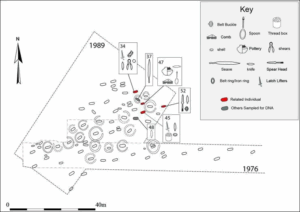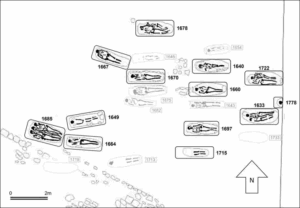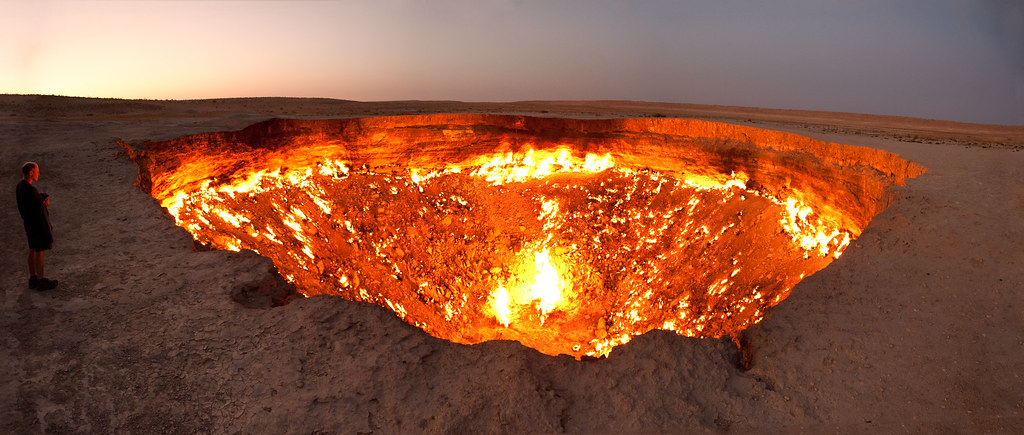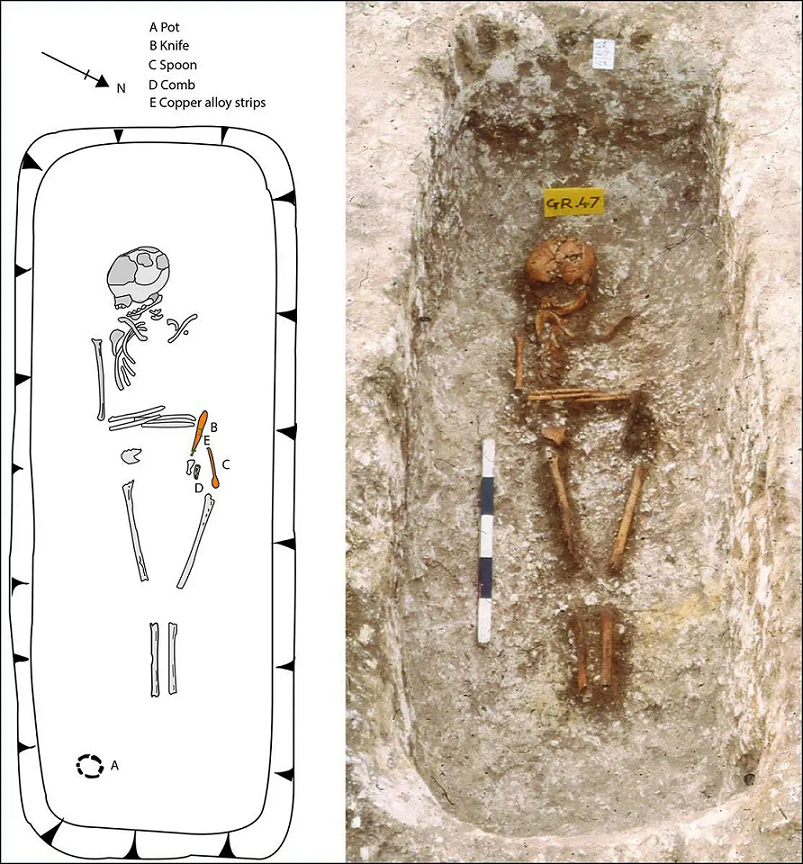
- Ancient DNA analysis uncovers evidence for West African ancestry in two unconnected burials from seventh century AD England
- This is the first evidence for genetic connections between Britain and Africa during the Early Middle Ages
- The grave goods indicate that they were valued members of their communities
- While one cemetery showed royal connections to continental Europe, the other was on the fringes of English territory
Archaeologists have analysed the DNA of two unrelated individuals buried in cemeteries in the seventh century on the south coast of England, revealing that they both had recent ancestors, likely grandparents, from West Africa.
The findings have been published this month in the Cambridge University Press journal Antiquity.
In each individual, their mitochondrial DNA (inherited from the mother) was northern European, but the autosomal DNA (from both parents) showed clear signs of non- European ancestry with affinity to present-day Yoruba, Mende, Mandenka, and Esan groups from sub-Saharan West Africa.
This indicates that both individuals had genetically and geographically mixed descent, in contrast to the rest of the people buried at the two cemeteries. Further investigation suggests that they both had one paternal grandparent from West Africa.
The Updown grave contains several goods, including a pot possibly imported from Frankish Gaul, and a spoon that could indicate the individual's Christian faith and/or connections to the Byzantine Empire.
The Updown cemetery was part of Kent's royal network and these goods, and other genetic indicators, point to Updown's continental connections.
Conversely, the individual at Worth Matravers was buried alongside a male with British ancestry and an anchor made of local limestone.
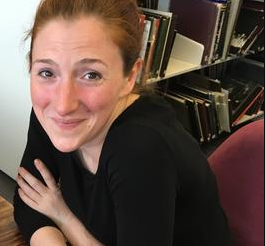
"The presence of grave goods, the fact that both burials are typical of their communities, indicate that these two people were valued," says Associate Professor Erin Sebo from Flinders University, who was part of the research team.
"There is no sign that they were regarded as unusual or different."
During the Early Middle Ages, England saw significant migration from continental northern Europe. However, the extent of movement from further afield has been less clear.
"Migration and its direction, scale and impact have been much debated in European archaeology," the authors say. "Archaeogenetic research can now provide new insight, even identifying individual migrants."
Therefore, to shed more light on migration in early medieval Europe, researchers from several universities performed ancient DNA analysis on individuals buried at two seventh century AD cemeteries on England's south coast: Updown in Kent and Worth Matravers in Dorset.
"Updown is also located near to the royal centre of Finglesham, indicating that these connections were part of a wider royal network," said lead author of the article, Professor Duncan Sayer from the University of Lancashire in the UK.
"In contrast, Dorset sat on the fringes of continental influence," added co-author Dr Ceiridwen J. Edwards from the University of Huddersfield, UK. "The archaeological evidence suggests a marked and notable cultural divide between Dorset and areas to the west, and the Anglo-Saxon influenced areas to the east."
Whilst the majority of the individuals buried at the cemeteries had either northern European or western British and Irish ancestry, which were both prevalent in England at the time, one person at each cemetery had a recent ancestor from West Africa.
Importantly, this adds a new dimension to understanding long-distance movement and demographic interaction involving Britain during the Early Middle Ages.
"This study has greatly enhanced our interpretation of the archaeological results by revealing not only fascinating family dynamics, but also exciting long-distance links between groups and individuals," says Professor Sayer.
"The fact that these two unrelated people of West African descent were buried 300 kilometres apart, in quite different kinds of communities with different travel networks is significant," said Associate Professor Sebo.
"We've long known, for example, that the first school in England was established in the seventh century by an African bishop sent by the pope to convert the English to Christianity - but that's an exceptional event. This suggests that diversity was not seen as exceptional."
Extensive trade networks mean that it is not uncommon to find objects from as far away as West Asia or Africa in early medieval England, but genetic evidence is different.
"It is significant that it is human DNA-and therefore the movement of people, and not just objects-that is now starting to reveal the nature of long-distance interaction to the continent, Byzantium and sub-Saharan Africa," added Professor Sayer.
"What is fascinating about these two individuals is that this international connection is found in both the east and west of Britain. Updown is right in the centre of the early Anglo-Saxon cultural zone and Worth Matravers, by contrast, is just outside its periphery in the sub- Roman west."
Dr Edwards concludes that "our joint results emphasise the cosmopolitan nature of England in the early medieval period, pointing to a diverse population with far-flung connections who were, nonetheless, fully integrated into the fabric of daily life,".
The paper, 'West African ancestry in seventh-century England: two individuals from Kent and Dorset' by Duncan Sayer, Joscha Gretzinger, John Hines, Michael McCormick, Keziah Warburton, Erin Sebo, Katharina Dulias, Maria Pala, Martin Richards, Ceiridwen Jane Edwards and Stephan Schiffels is published in the journal Antiquity. DOI: 10.15184/aqy.2025.10139

